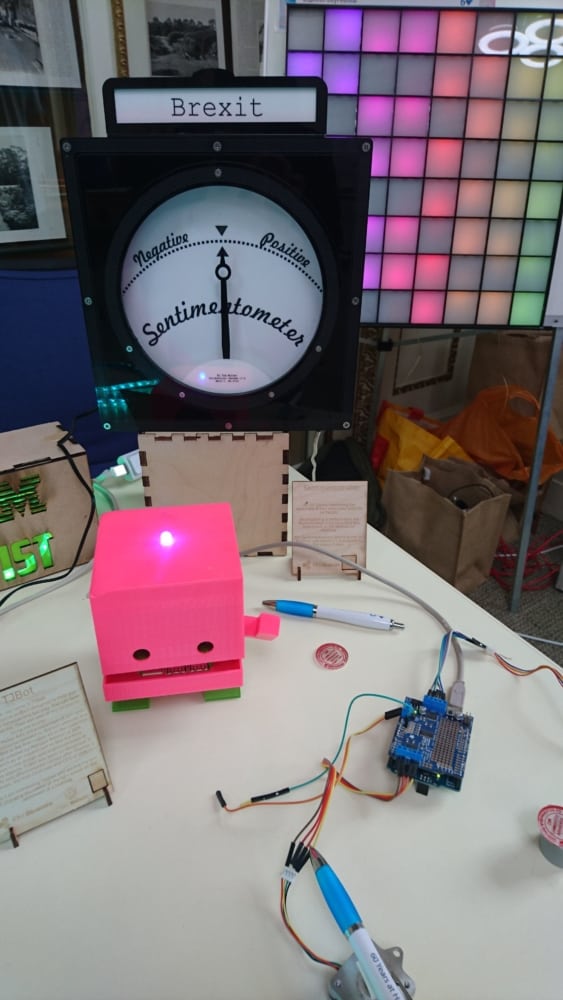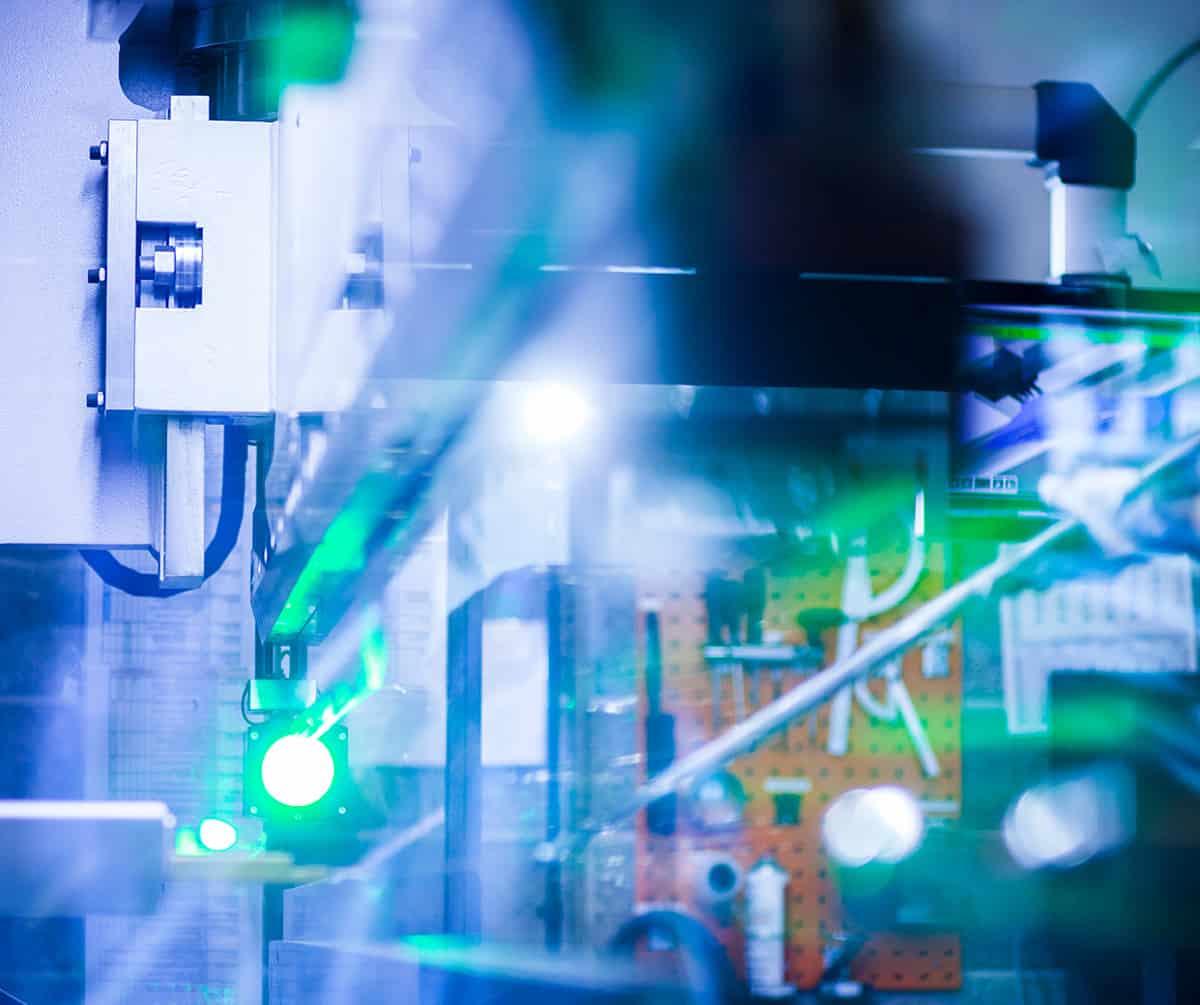Exploring innovation, from taxis to data centres – Physics World


There is an entire genre of journalism dedicated to conversations with taxi drivers. Pretty much every political hack in the business has filed a column of this type at least once, and a few of them, such as Thomas Friedman of the New York Times, do it so regularly that they’ve become (in)famous for it. Until last week, though, I’d never felt inclined to make my own contribution – but then I went to a “Festival of Innovation” at IBM’s Hursley Park campus, and the conversation with my taxi driver unexpectedly turned into a 15-minute version of the festival itself.
The Festival of Innovation was held to mark the 60th anniversary of Hursley Park, and it featured demos from more than 60 IBM scientists on topics including artificial intelligence (AI), cybersecurity and cloud computing. But before I even set foot inside the elegant mansion at the heart of the IBM campus, the man from Steve’s Taxi ensured that I was well-briefed. During the short drive from Winchester railway station, he treated me to a monologue on technologies such as drones (“Why spend billions on a submarine when you can have all these drones just swarming around?”), self-driving cars (“Brilliant – about time we got terrible drivers off the road”), smart devices and more. By the time we arrived, he had moved on to quantum computers (they’re going to change the world, apparently), and as I left he was singing the praises of nanotechnology as a tool for future cancer treatments. All in all, it’s fair to say that I was well-primed to learn about innovation even before I walked through the grand entrance of IBM’s UK headquarters.
Once inside, my first stop was the festival’s “Mad Science Zone”. There I encountered Tim Minter, an IBM scientist, inventor and electronic artist who was showing off his “Brexit Sentimometer”. This cute little device (see photo) combs Twitter for messages about the UK’s impending exit from the European Union, uses a rudimentary AI tool to assess whether they are positive or negative, and displays the aggregated results on a dial. Though far from scientifically rigorous – Minter admitted that a pro-Brexit tweet along the lines of “Bloody get on with it already!” would probably register as a “negative” — whenever I looked, the dial always seemed to be hovering near the centre. This is, at least, in line with current opinion polls.
Artificial intelligence engines have a way to go before they can replicate the language skills of Winchester’s finest BBC Radio Four-listening cabbie
Meanwhile, over in the AI Zone, Andy Barnes was demonstrating an innovation that my taxi driver might have appreciated. Watson Assistant for Automotive is a relatively new application for IBM’s natural language-based AI engine, and it is designed to parse common navigation queries in a way that feels natural to human operators. As an example, Barnes described a sequence of queries about a coffee shop. Unlike many AIs, Barnes explained, if you ask Watson for information about the nearest coffee shop, and then follow it up with additional queries (“When’s it open?”) or issue commands (“Take me there”), it “knows” you’re still talking about the coffee shop even if you don’t repeat the shop’s name. For humans, that is second nature, but for computers it is apparently very difficult – which just goes to show that AIs have a way to go before they can replicate the language skills of Winchester’s finest BBC Radio Four-listening cabbie.
Read more

IBM innovations, Mississippi model and Nobel Prize preview
The Watson AI engine also made an appearance at one of the festival’s cybersecurity displays. According to Sean at the “Stop and Spot Cryptojackers” booth, nearly two-thirds of UK businesses (probably including some taxi firms) have experienced cryptojacking attempts, where criminals try to infect legitimate websites with code that co-opts visitors’ computing power and uses it to mine bitcoin or other cryptocurrencies. Sean went on to explain that an IBM-made platform called QRadar uses Watson to help security experts characterize such attacks, but the thing I found most interesting is that cryptojacking doesn’t require its ultimate victims to click on a dodgy link or download a suspicious attachment. Instead, all they have to do is point their browsers to a compromised website and watch the cryptomining code send their CPU usage through the roof.
Both of these applications show that AI engines can be powerful, commercially useful tools, but elsewhere at the festival the talk centred around some of their weaknesses . During one of the event’s mini-lectures, IBM software engineer Dan Cunnington explained that image-processing AIs such as the ones used in self-driving cars are relatively easy to confuse. A few strategically-placed stickers can, for instance, be enough to make an algorithm decide that a “Stop” sign is actually a speed limit – with possibly tragic consequences. One way around this is to develop algorithms that not only identify what they see but also explain how they made that identification. That way, human engineers can double-check the algorithm’s “reasoning” and, if necessary, take steps to improve it. In Cunnington’s example, a navigation AI might inform my taxi driver that, based on data from webcam images, his preferred route from Winchester to Hursley Park was experiencing heavy traffic. To check the accuracy of this information, one might ask the AI which parts of the webcam images it interpreted as “traffic”. Then, if the AI gives a nonsensical answer (such as an image showing trees blowing in the wind), the algorithm was clearly mistaken, and programmers can go in and fix it.
A lot of the stalls at the IBM festival referred to “the cloud” – that is, to data, storage or computing power that is held remotely and accessed when needed. Discussions about “the cloud” can get pretty nebulous (pardon the pun), so as a corrective, I went on a tour of IBM’s Hyperscale Cloud Data Centre (HCDC). Located on a lower floor of a nondescript office block, this vast, noisy room was filled with racks upon racks of the servers and other equipment required to run IBM’s internal systems and customer services. Above the din of the HCDC’s cooling system, tour guide William Chorlton described some of the steps IBM has taken to conserve energy. These ranged from simply rearranging the racks for better airflow (a 28% energy saving, Chorlton said) to using weather forecasts to predict and manage the centre’s future cooling requirements. Chorlton also “opened the bonnet”, so to speak, on an IBM Z14 mainframe. This refrigerator-sized unit holds up to 32 terabytes of RAM, transfers data internally at a rate of 16 GB/s via cables as thick as my finger, and costs approximately £1m. (“This is the closest I’ll ever get to a million pounds,” one of my fellow visitors observed.) The processors on these mainframes are water-cooled, Chorlton said, but the machines themselves are kept at a suitable operating temperature by an AMD – an “Air Movement Device”, otherwise known as a fan. (“IBM loves three-letter acronyms,” he quipped.)
By the time my tour group had finished admiring the Z14, the festival was nearly over, so I had to miss exhibits on quantum computing, AI in medicine and dozens of other topics. But as my second taxi of the day (driven, alas, by a polite but largely silent cabbie) pulled away from Hursley House, I left with the impression that, 60 years after the lab’s founding, reports of the death of industrial research in the UK have been greatly exaggerated.
